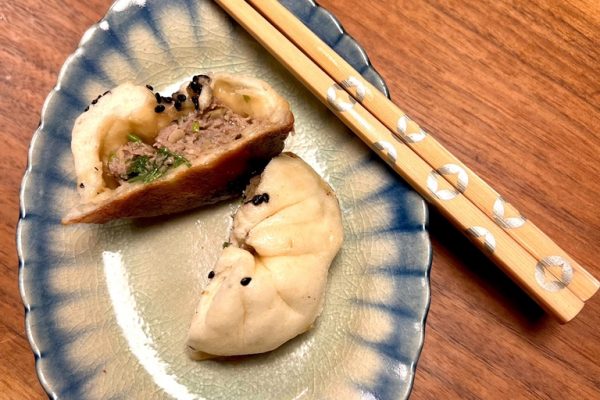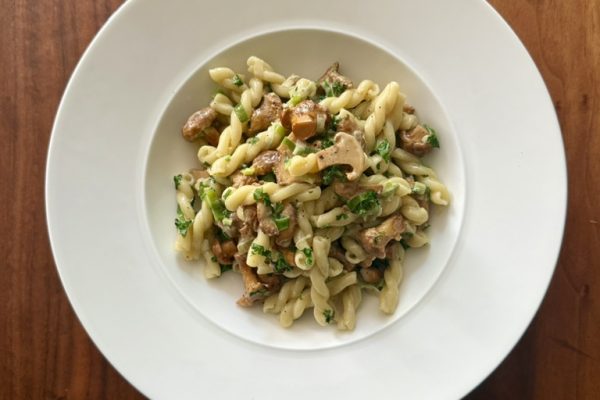We have already described our favourite dal of all, Dal Makhani, here, and it is prepared with whole urad beans (‘maa ki dal’). If you read something about urid instead of urad, this is just another name for the same thing.
The small urad beans have a black skin and, in their whole form, require the longest cooking time of all the beans and lentils we know. It is quite different when they are peeled and split (‘dhuli urad dal’). The inside is ivory-coloured and in this form they cook rather quickly. You can buy them as ‘Urad Dal’ or sometimes also as ‘Urid Dal’. The peeled and split beans are only about 2–3 mm long.

This allows you to cook a very traditional, ancient dal without tomatoes. Tomatoes are ubiquitous in Indian cuisine today, but it is important to remember when this became the case: tomatoes originate from Central and South America and were brought to Europe by the Spanish and Portuguese after Christopher Columbus and other explorers discovered the ‘New World’. They could not have reached India before the 16th century; the Portuguese probably brought them there after establishing trade routes and colonies in India (e.g. Goa) from 1498 onwards. And at the beginning of all this, the role that tomatoes could play as food was not yet understood. The 17th century is therefore more likely to be the correct date. Cooking dal is thousands, not hundreds, of years older.
This peeled urad dal must be washed thoroughly. To do this, stir it by hand in a bowl with plenty of water, pour off the milky water, replace it with fresh water, and so on. After about four rounds, the water will remain more or less clear. Then soak the dal in water, which should be two centimetres or more above the beans.

Two hours is the minimum time required; overnight is not necessary, but longer will not cause any harm. We almost always prepare this in the evening for the following day. The volume of the beans will double during this process.
Then the dal is cooked for the first time, again with enough water to cover the beans by about two centimetres. In India, households usually use pressure cookers, which make this process quick. In a normal pot, it takes about 30 to 60 minutes for the beans to soften while still retaining their shape. We bring them to the boil and then reduce the temperature to medium (in our case: 6 out of 10), without a lid. We skim off any foam that forms on the surface at the beginning.
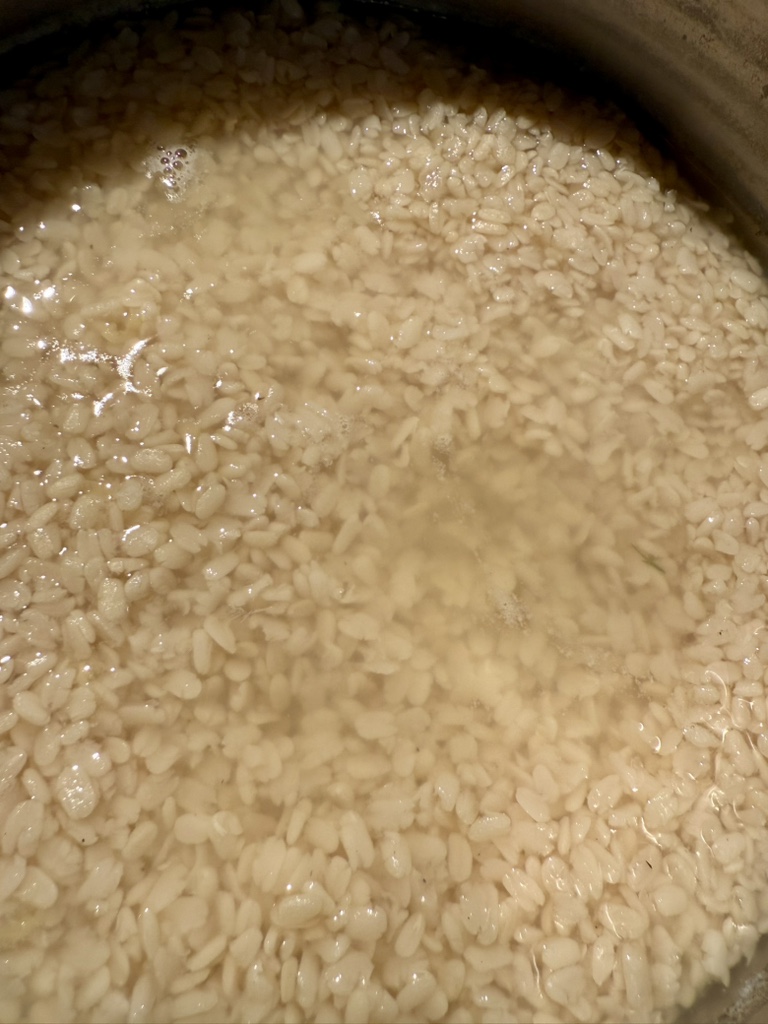
Now it’s time to season for the first time. Everyone does this in their own way. We use coriander, cumin, turmeric, Kashmiri chilli powder (all ground) and, of course, a little salt. This combination can probably be considered standard. We also add asafoetida and amchoor, the latter of which provides a pleasant acidity.
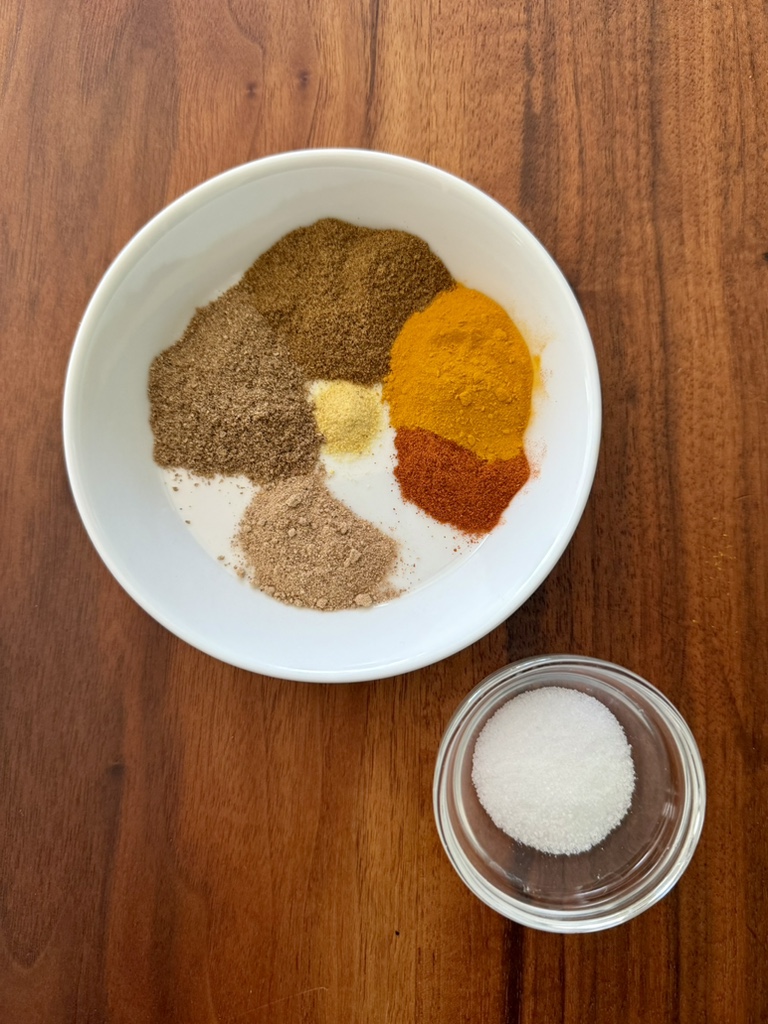
Ginger and/or garlic can also be used at this point, but there are many different styles. We finely grate a little of both and add it to the dal, but everyone should do this according to their own taste. There is no right or wrong here, and overall, such an old dish is not one for exact ingredient lists.
Let it simmer gently for another 20 minutes so that all the flavours develop and blend together. During this time, the dal will become increasingly creamy. Now season with kasoori methi, which is dried fenugreek and has the flavour most commonly associated with curry powder. Rub the dried leaves finely over the dal between your palms.
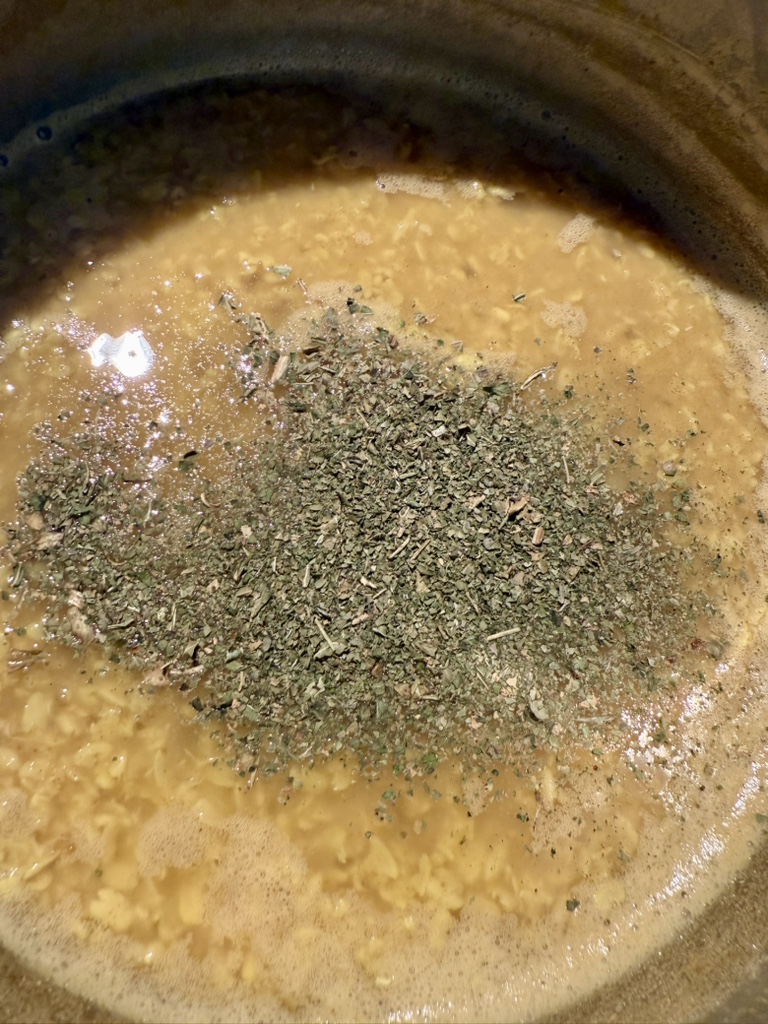
For the final step, you need a spiced oil – in India, this is usually described using the English term ‘tempering’. To make this, ghee, in other words clarified butter, is heated and seasoned with aromatics. If you want to remain vegetarian or vegan, use neutral vegetable oil.
Mustard seeds, cumin seeds and Kashmiri chilli powder should be added to the fat or oil. In India, fresh green chillies are almost always used, roughly chopped and with the seeds left in. We are a little more cautious, removing the seeds and finely dicing the chillies. Fresh coriander is also an essential ingredient in this dal.

The ghee (or oil) is heated once and then removed from the heat. First, add the mustard and cumin seeds; they need two minutes to release their aroma. Then add the green chilli and finally the chilli powder.
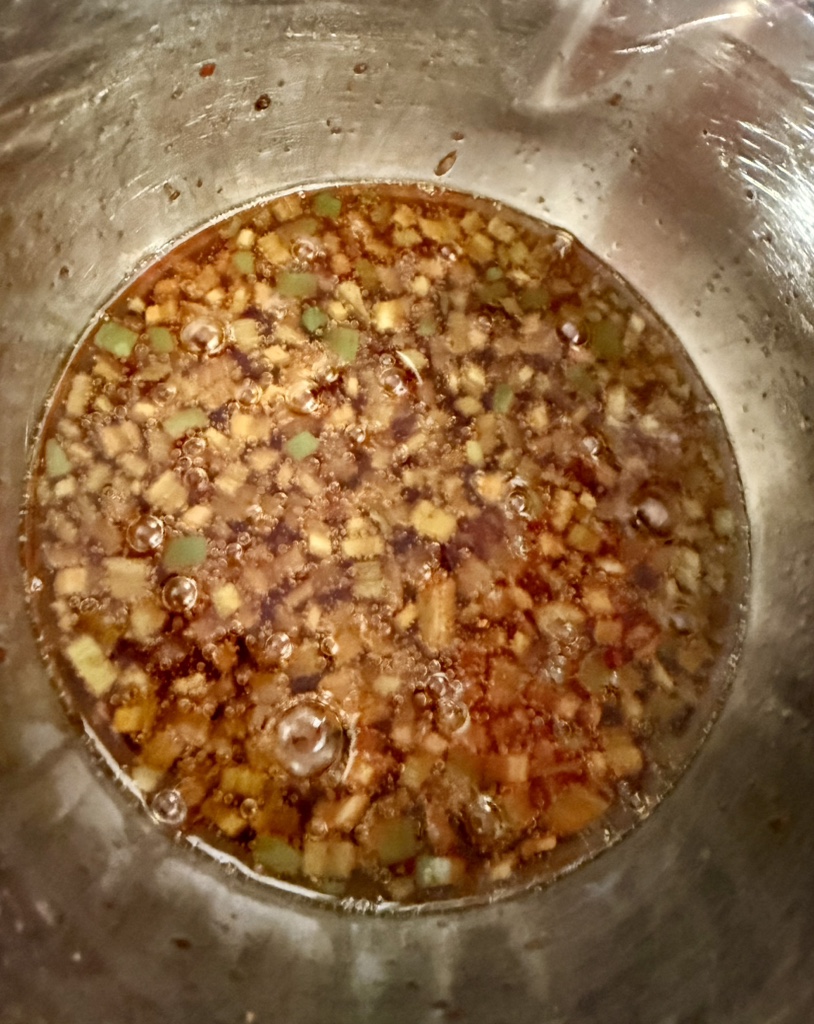
The fresh coriander leaves are roughly chopped and stirred into the dal. The spiced oil is poured over the top. Whether you stir it in or not, it will separate again over time. This not only looks great, but also adds variety to each spoonful.
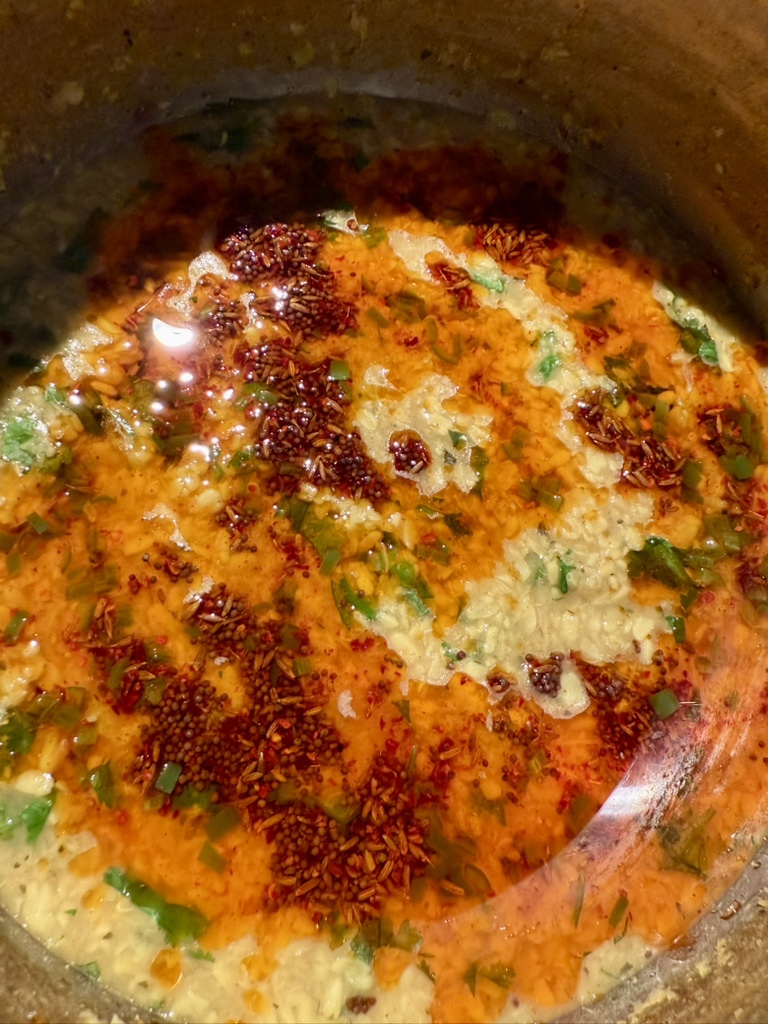
This dal is a return to slowness. It is not only nutritious, but also rich in plant protein and easy to digest. Finally, you can add a squeeze of lemon juice.
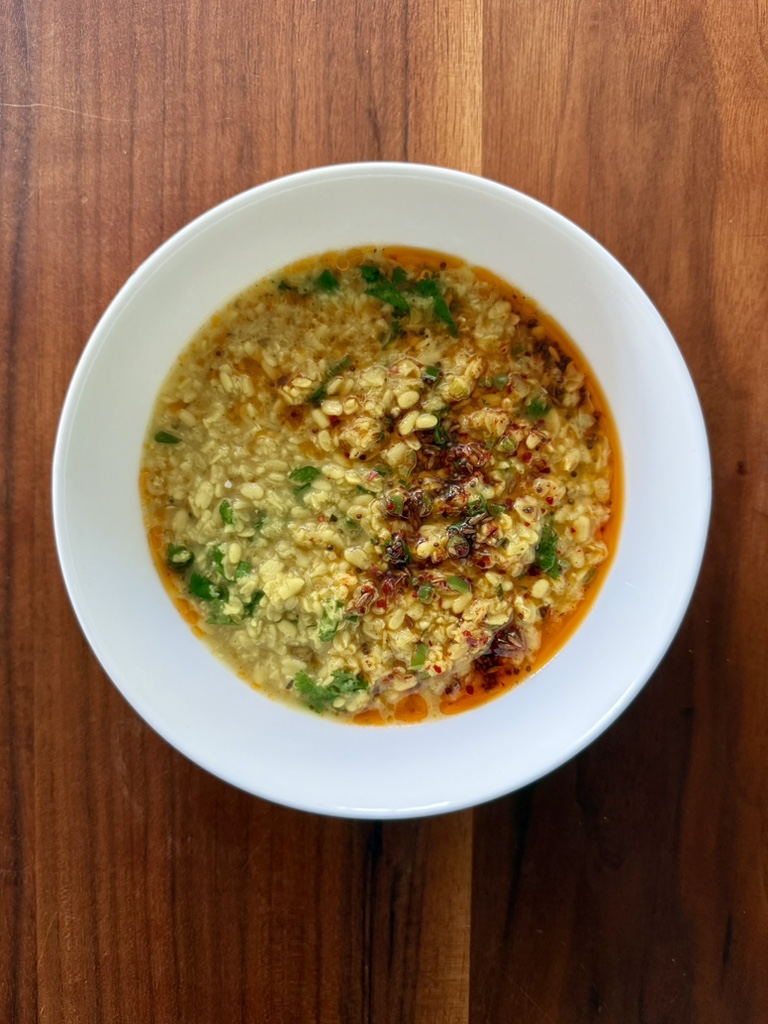
Enjoy.
And may the taste be with you.
Ingredients ( for 4 people):
300–400 g urad dal (peeled and split urad beans)
Water for washing and soaking
1 teaspoon each of coriander, cumin, turmeric and (Kashmiri) chilli powder
Salt to taste (add 1 teaspoon, then taste and add more if necessary)
Optional: ½ teaspoon mango powder (amchoor) and a pinch of asafoetida
Optional (we say yes!): 2 teaspoons each of grated garlic and ginger
Optional (again, we say yes!): ½ handful of dried fenugreek (kasoori methi)
Ghee (or neutral vegetable oil), approx. 3 tablespoons
1 teaspoon each of mustard seeds and cumin seeds
½ teaspoon Kashmiri chilli powder
1–2 green chillies (according to taste and desired heat)
1–2 handfuls of fresh coriander, according to taste
Optional: A little lemon juice

